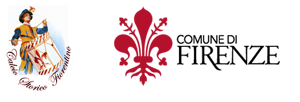
Fixtures
Calcio Storico Fiorentino 2020
| Match Day Ia semifinale |
|---|
|
(Ia semifinale)
Cancelled - CancelledCalcio Storico Fiorentino
Verdi San Giovanni vs Azzurri Santa Croce |
| Match Day 2a Semifinale |
|
(2a Semifinale)
Cancelled - CancelledCalcio Storico Fiorentino
Rossi Santa Maria Novella vs Bianchi Santo Spirito |
Report
Due to the ongoing COVID-19 Coronavirus Pandemic the 1st and 2nd Semi-Finals (Verdi San Giovanni v Azzurri Santa Croce and Rossi Santa Maria Novella v Bianchi Santo Spirito) were both cancelled.
About Calcio Storico Fiorentino
Calcio Storico Fiorentino is a Renaissance Football game first played in Florence (Fiorentina), Tuscany in the 1400s by workers on breaks from work in the city. It was the first organised football in the world, rather than the Medieval mob football which preceeded it and where there were no rules or restrictions on numbers playing. It could be seen as part of the wider Renaissance whereby Tuscany’s ancient pre-Roman, pre-Catholic past was brought back. It is 27-a-side and played on sand in the Piazza di Santa Croce
[References: [4] Calcio Storico Fiorentino Sito Ufficiale (2020) CALCIO STORICO FIORENTINO [Internet] Available from: http://calciostoricofiorentino.it/?q=calcio-storico-fiorentino [Accessed 4 August 2020] and [5] Calcio Storico Fiorentino Sito Ufficiale (2020) Studies & Documentation [Internet] Available from: http://www.calciostoricofiorentino.it/?q=studi_e_documentazione [Accessed 4 August 2020]
*The Tuscan language (Etruscan) is one which predates the Latin arrival in the Italian peninsula, and even though the letters and sounds are known there is no knowledge of the word meanings as no document translating Etruscan to Latin or Greek has ever been found. It does, however, sound similar to Basque, and therefore could be incuded in the Celtic sports section as part of the “Atlantic” or “Black Atlantic” family along with the Celtic languages, Basque and Berber (Tamashek) – half the words in the Gaelic language are of an Indo-European origin (Greek, Latin, Germanic, Slavic etc)and half of a North African Afro-Asiatic origin (Berber, Tuareg, Maltese, Hebrew, Arab etc).
[References: see Encyclopedia Brittanica sections on Indo-European, Celtic, and Afro-Asiatic languages: Encyclopedia Britannica | Britannica ]
REFERENCES
IMAGES
[1] Calcio Storico Fiorentino Sito Ufficiale (2020) logo-tamburino-firenze [Internet] Available from: http://www.calciostoricofiorentino.it/sites/default/files/logo-tamburino-firenze.png [Accessed 4 August 2020]
References
[2] Calcio Storico Fiorentino Wayback Machine (2020) Sorteggio 1a e 2a Semifinale [Internet] Available from: https://web.archive.org/web/20201031214703/http://calciostoricofiorentino.it/?q=node/404 [Accessed 20 July 2021]
[3] Calcio Storico Fiorentino Wayback Machine (2020) Torneo di San Giovanni: il vero vincitore è il personale impegnato nell’emergenza coronavirus [Internet] Available from: https://web.archive.org/web/20201031220903/http://calciostoricofiorentino.it/?q=node/406 [Accessed 20 July 2021]
[4] Calcio Storico Fiorentino Sito Ufficiale (2020) CALCIO STORICO FIORENTINO [Internet] Available from: http://calciostoricofiorentino.it/?q=calcio-storico-fiorentino [Accessed 4 August 2020]
[5] Calcio Storico Fiorentino Sito Ufficiale (2020) Studies & Documentation [Internet] Available from: http://www.calciostoricofiorentino.it/?q=studi_e_documentazione [Accessed 4 August 2020]
ACKNOWLEDGEMENTS
Thanks to Francesco.
ABOUT THIS DOCUMENT
Researched, compiled and written by Enda Mulcahy for the
Eirball | Irish North American and World Sports Archive
Last Updated: 20 July 2021
(c) Copyright Enda Mulcahy and Eirball 2021
You may quote this document in part provided that proper acknowledgement is given to the authors. All Rights Reserved. The Logos and Photos used in this article remain the property of the organisations and individuals which own the copyright and are used here for educational and information purposes only.


![Calcio Storico Fiorentino Stock Photo - Azzurri di Santa Croce (Blue) v Bianchi di Santo Spirito (White) [Reference: 6][Picture Credit: Giuseppe Sabella]](https://gaa.world/wp-content/uploads/2020/12/Calcio-Storico-Fiorentino-Azzurri-v-Bianchi-Stock-Photo-Cropped-1024x509.jpg)







